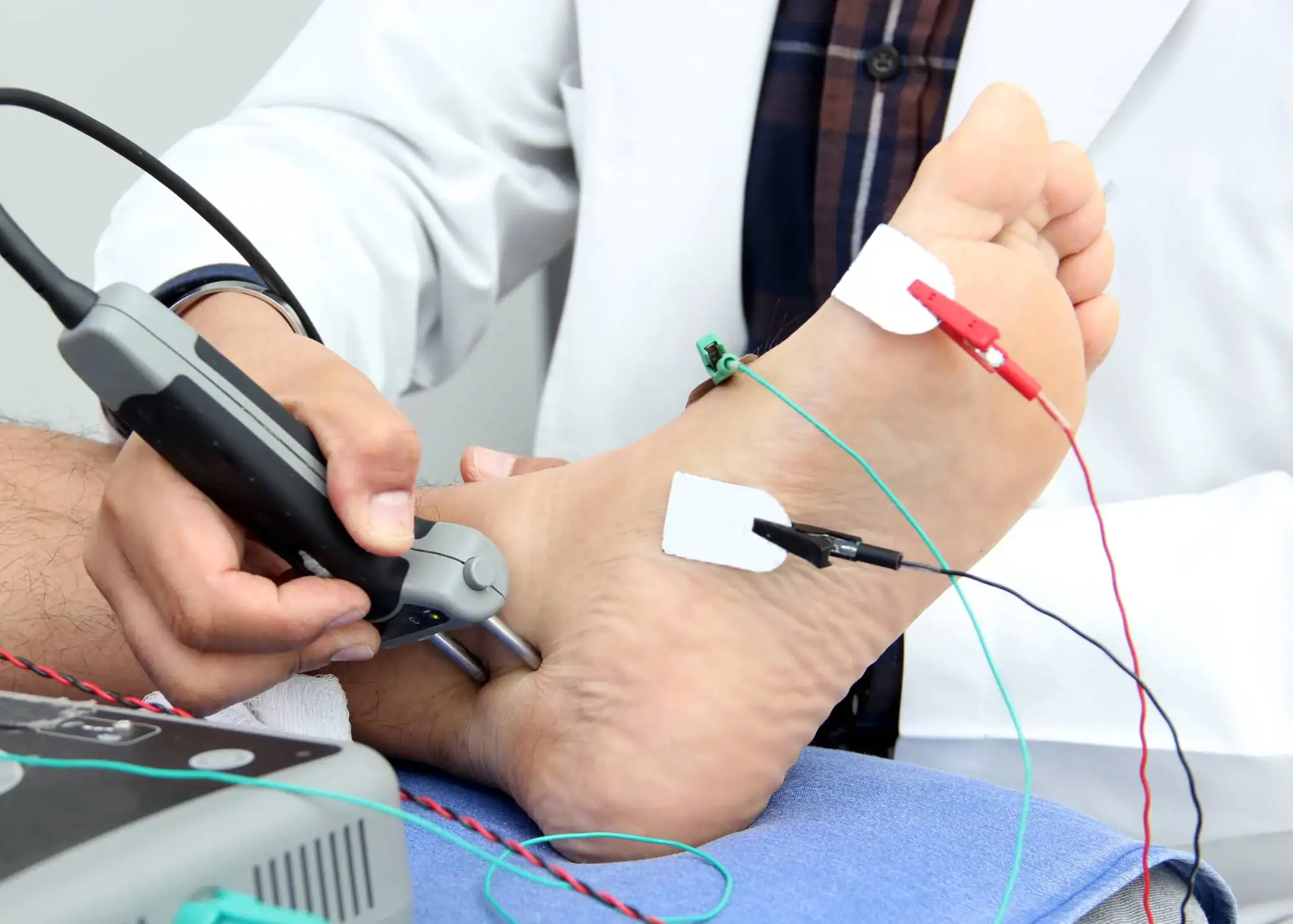Advanced nerve and muscle testing reveals exactly what’s causing your pain, numbness, or weakness.
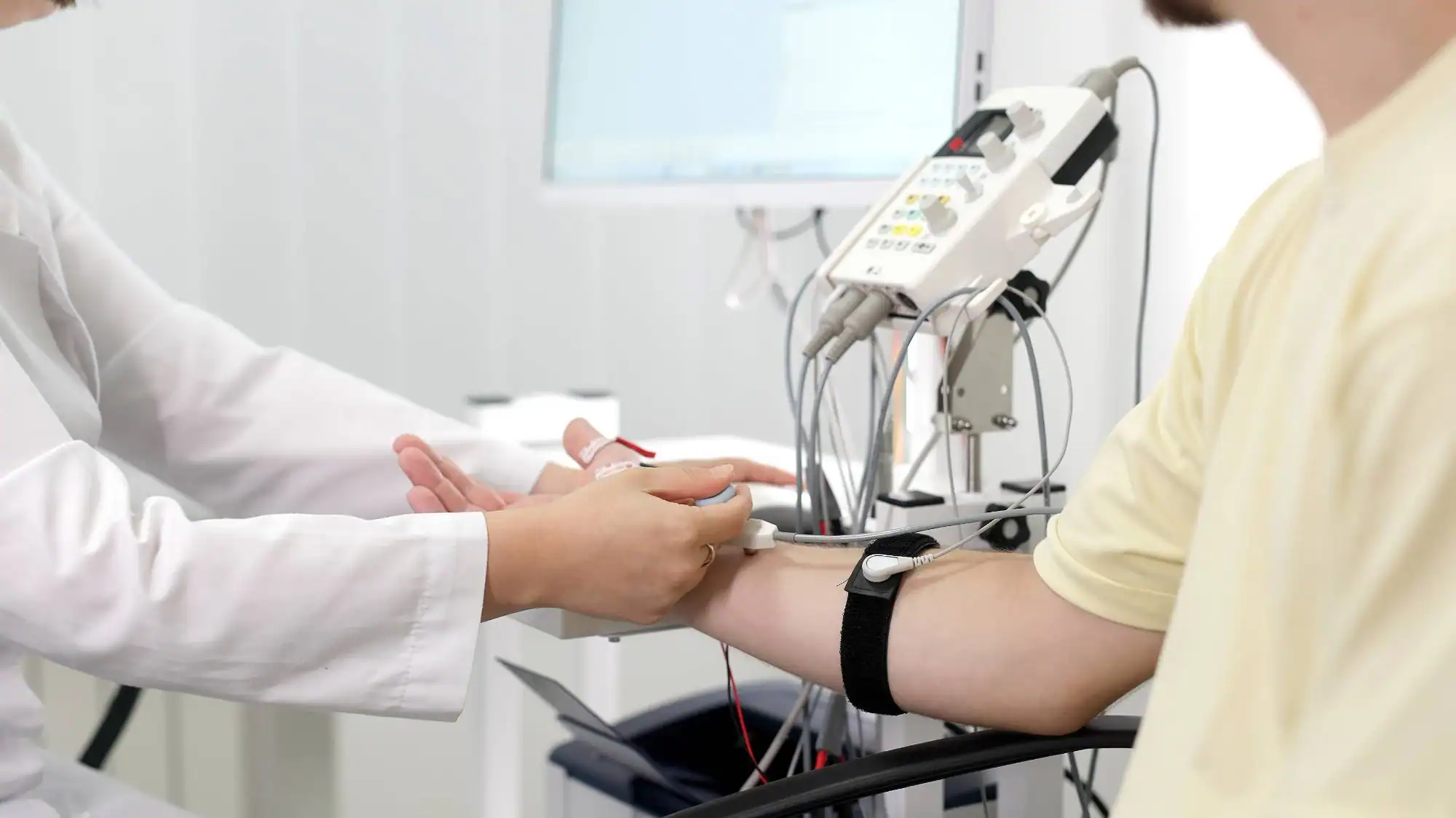
Reviews
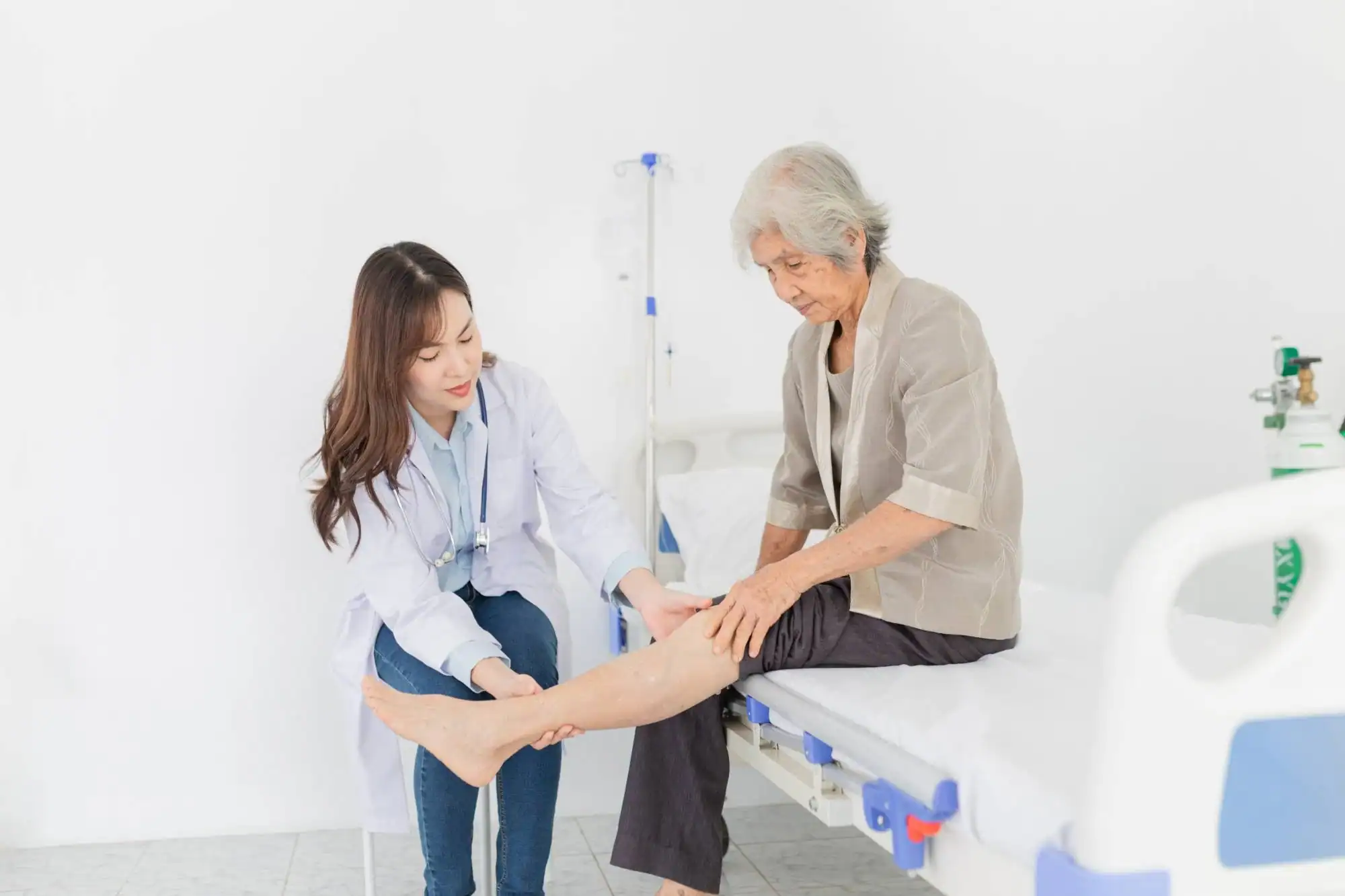
You’ve been dealing with numbness in your hands, shooting pain down your leg, or muscle weakness that makes simple tasks frustrating. Other doctors have given you vague explanations or generic treatments that barely help.
Nerve and muscle testing changes that. EMG and nerve conduction studies measure exactly how your nerves and muscles are functioning. Instead of guessing, you get precise data about where the problem is and how severe it is.
When you know what’s actually wrong, treatment becomes targeted. No more trial-and-error approaches or wondering if your symptoms will get worse. You get a clear diagnosis and a plan that addresses the real issue.
NY Spine Medicine has been providing comprehensive nerve and muscle testing to Borough Park residents for years. We understand that accurate diagnosis is the foundation of effective treatment.
We use advanced EMG equipment and nerve conduction testing to evaluate everything from carpal tunnel syndrome to spinal nerve compression. Each test is performed by our experienced specialists who know how to interpret the results and explain what they mean for your specific situation.
You’re not just getting a test – you’re getting answers from doctors who have seen thousands of cases and know exactly what to look for.
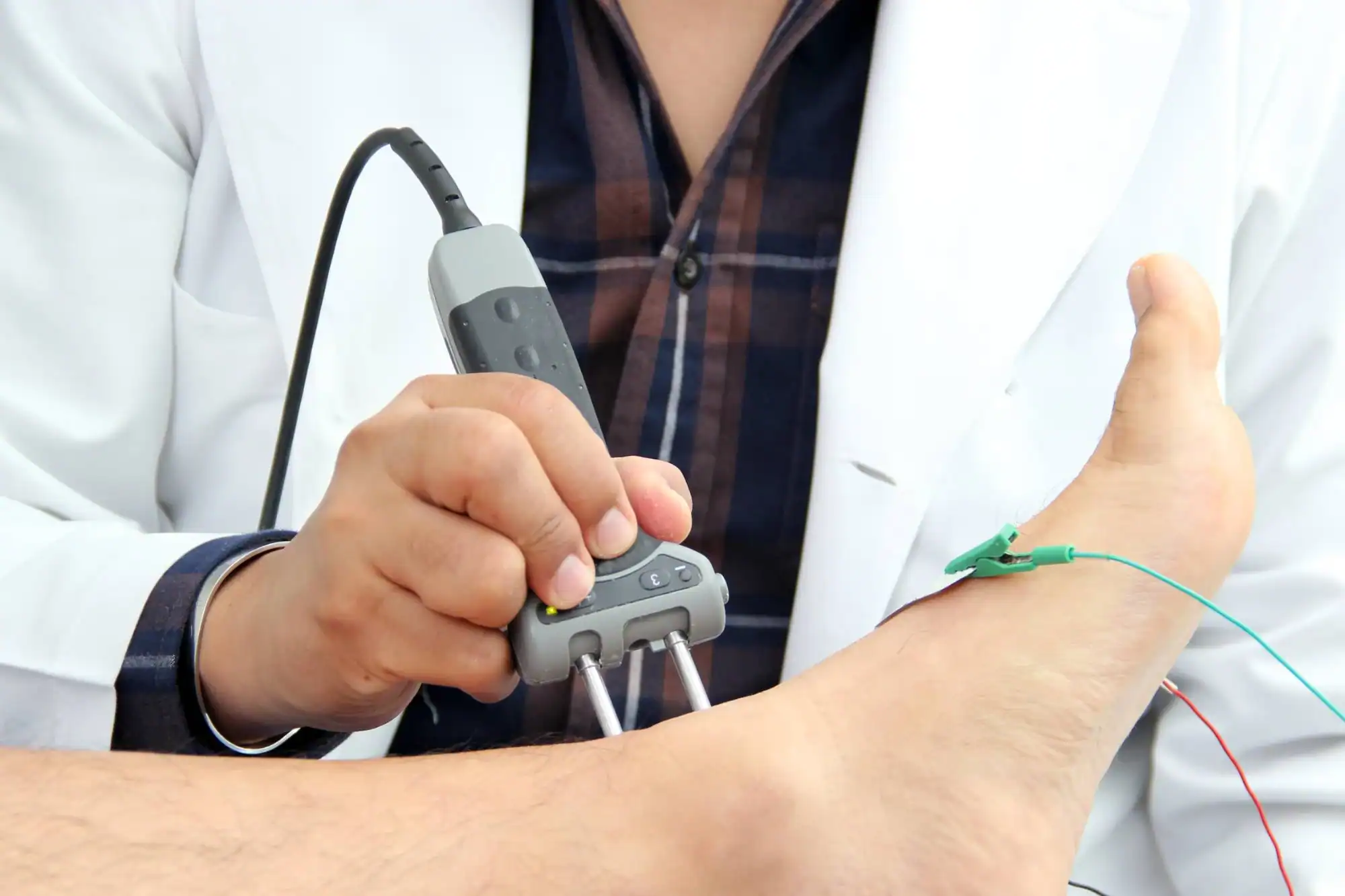
The nerve conduction study comes first. Small electrodes are placed on your skin over the nerves being tested. Mild electrical pulses measure how fast and strong your nerve signals are. You’ll feel a brief tingling sensation, but it’s not painful.
Next is the EMG, or electromyography test. A thin needle electrode is inserted into specific muscles to measure their electrical activity. This shows whether your muscles are responding normally to nerve signals or if there’s damage affecting function.
Both tests usually take 30-60 minutes total. You get results immediately, and we explain exactly what the findings mean. No waiting weeks for answers or trying to decode medical jargon on your own.
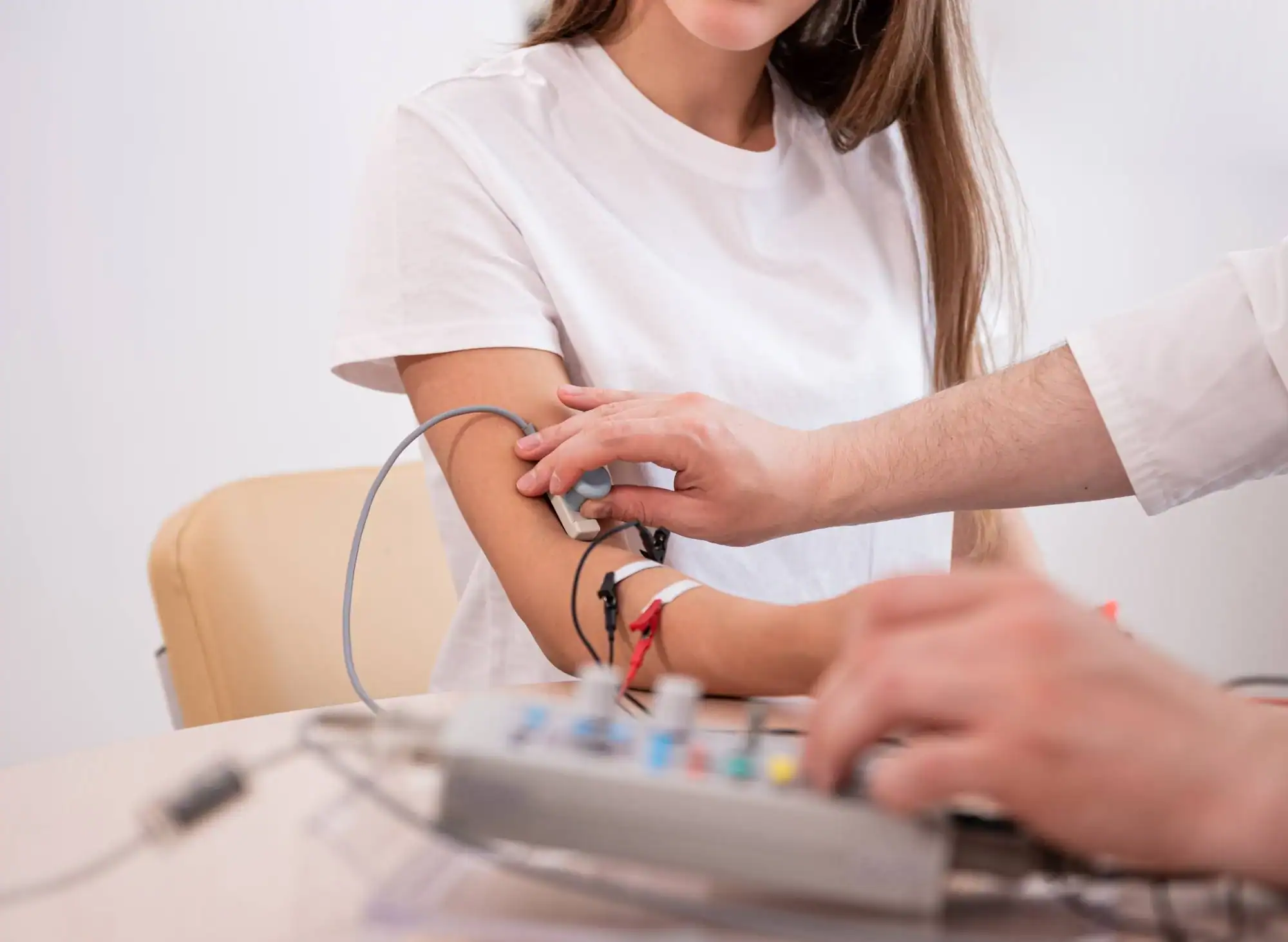
Ready to get started?
Your nerve and muscle testing includes both EMG and nerve conduction studies performed during the same appointment. We evaluate multiple nerve pathways and muscle groups to get a complete picture of what’s happening.
You receive detailed results immediately after testing, along with a thorough explanation of what the findings mean for your condition. We discuss treatment options based on your specific test results, not generic recommendations.
Many Borough Park patients appreciate that testing can often be scheduled quickly, and most insurance plans cover these diagnostic procedures. Our goal is getting you answers and starting appropriate treatment as soon as possible.
